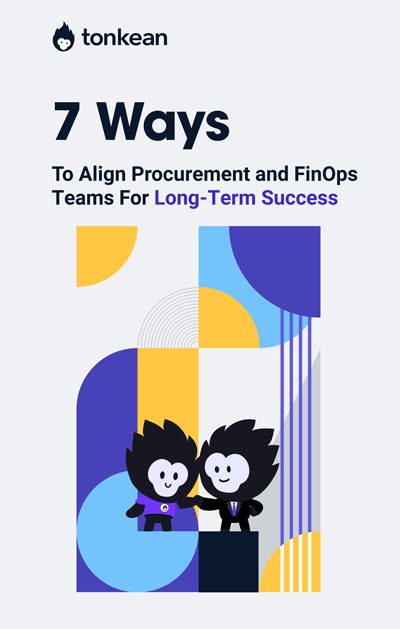Whitepaper
7 Ways To Align Procurement and FinOps Teams For Long-Term Success
What will you learn?
In most organizations, procurement and FinOps are two distinct entities. They’re siloed technologically. And their responsibilities differ. But distinctions between the two teams are eroding. And their priorities and responsibilities have begun to intersect. More and more every day, they depend on each other.
But that comes with certain operational mandates. For either procurement or FinOps to function to the best of their abilities—and to most positively affect business outcomes—more than ever, they need to be aligned and equipped to collaborate. Supporting more seamless and symbiotic collaboration between the two can lead to cost savings, more informed insights, better demand planning, a better understanding of the vendor landscape, better decision-making, and less time-consuming processes. It also mitigates risk—by helping organizations determine with greater fidelity what technologies to invest in, for example.
Download this whitepaper for principles to follow and concrete next steps to take in order to achieve this alignment and equip your FinOps and procurement teams to work better together.
Download Your Whitepaper

3 things to take away from this whitepaper
-
How to refine and reinforce governance structures between FinOps and procurement teams to help them work better together more systematically. This will ensure your organization maintains a holistic, circumspect understanding of its payment considerations, among other things.
-
How to centralize the intake-to-procure process using intelligent automation. A centralized intake process provides complete visibility into the approval process. Procurement professionals can spend more time strategically thinking about how they’re going to save the business money rather than wasting time manually chasing approvals from finance, legal, and other teams.
-
How to use technology to automate cross-team and cross-system workflow. An intelligent request automation platform can automate away much of the manual work entailed in this kind of “in-between” work, while lending structure, support, and tracking to the task of triaging and coordinating responses. It adheres unstructured requests to a standardized process that team members on both sides can scale and trust.










